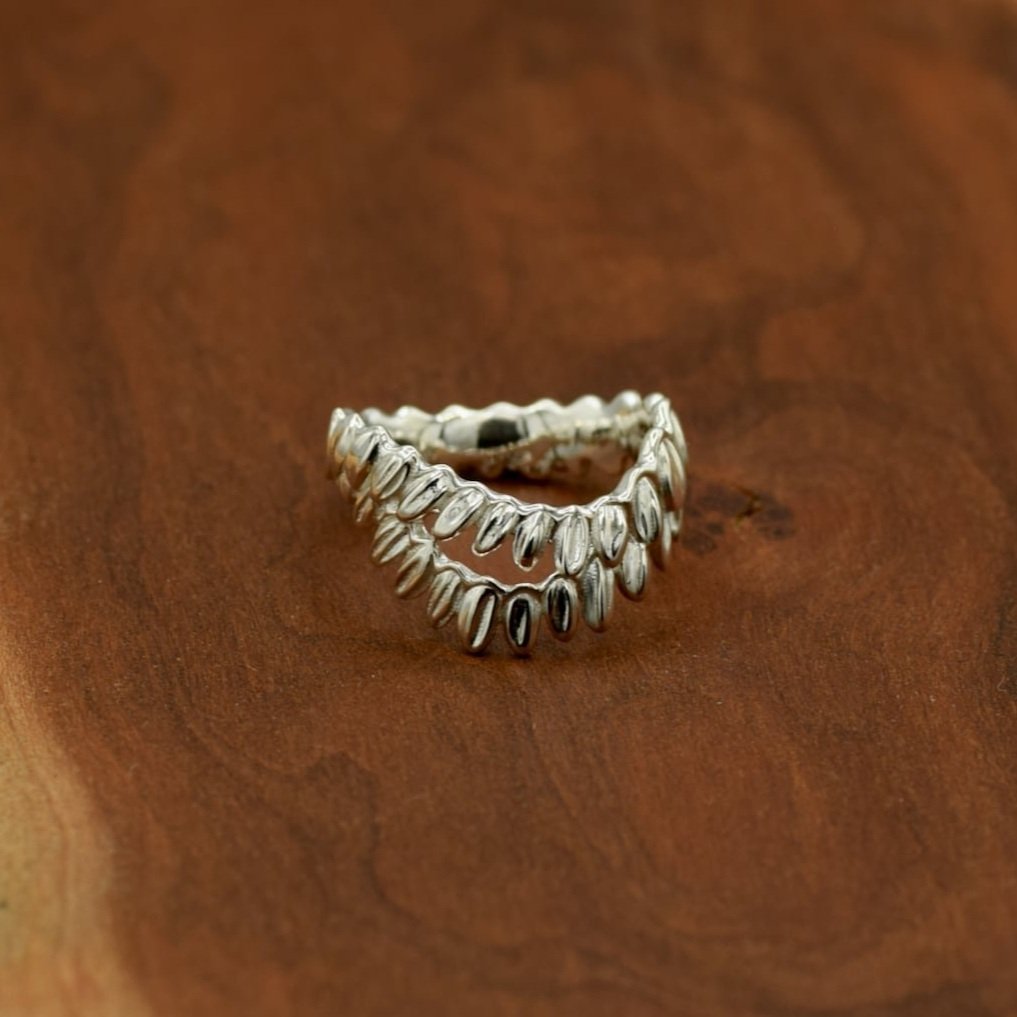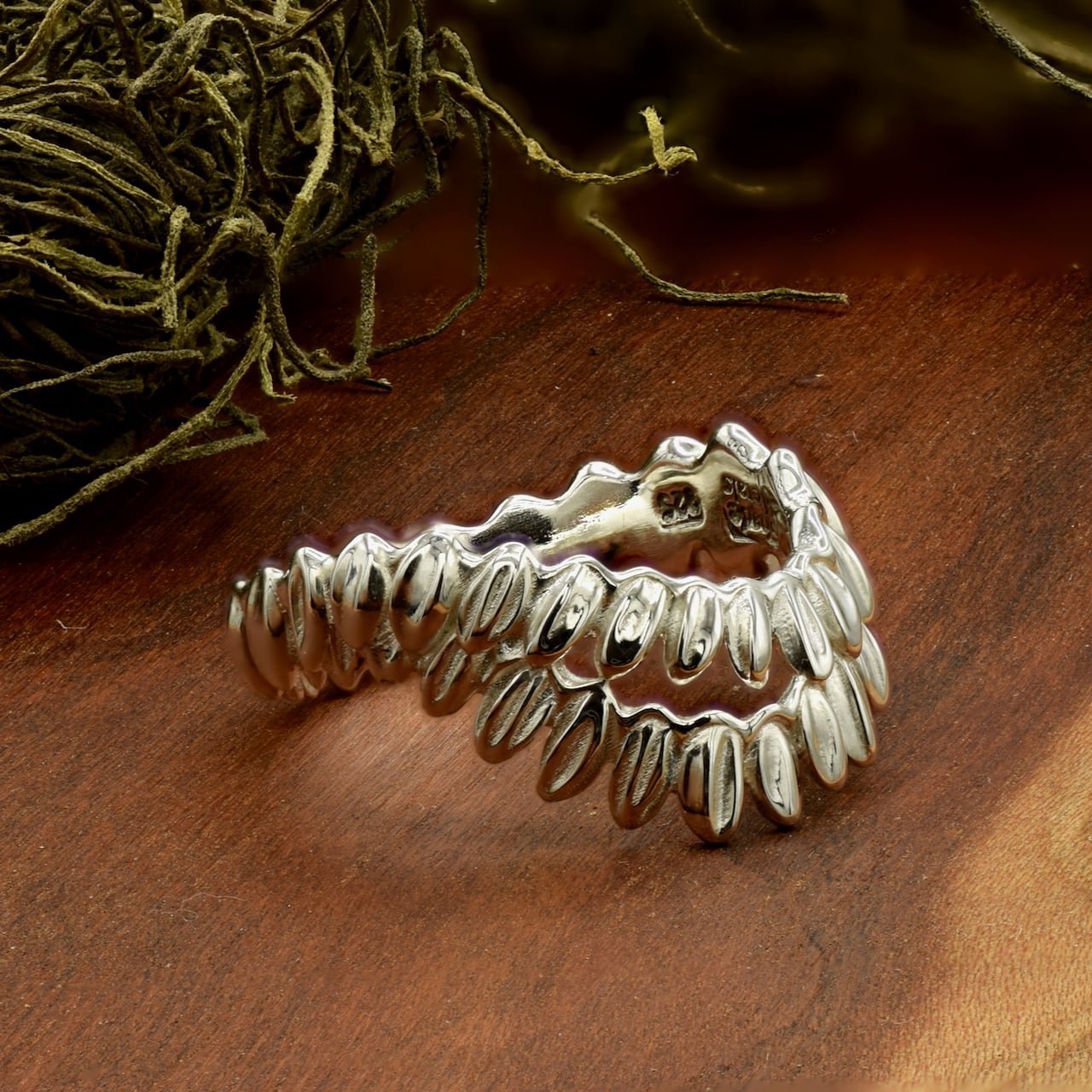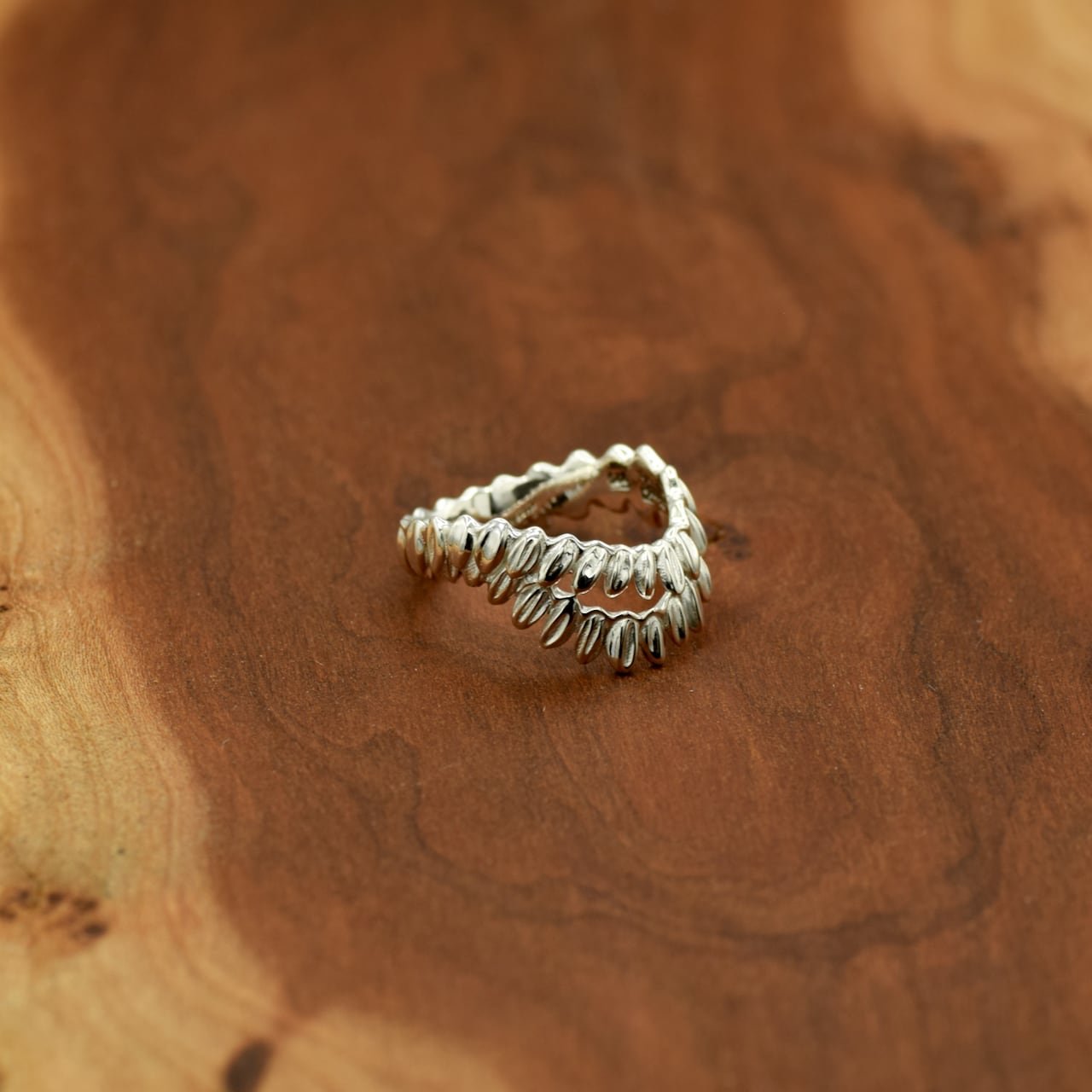 Image 1 of 6
Image 1 of 6

 Image 2 of 6
Image 2 of 6

 Image 3 of 6
Image 3 of 6

 Image 4 of 6
Image 4 of 6

 Image 5 of 6
Image 5 of 6

 Image 6 of 6
Image 6 of 6







Rice Ring | Oryza sativa
Rice is a grass, and its grains are arranged along stalks that tilt and dance in the breeze. This was our inspiration, two gentle cascades of rice twisting around the finger. The design was first sketched out on paper, once in our 3D software we sculpted each individual grain to mimic the pinched husk of rice.
Sterling silver
SHIPS IN 1 - 3 DAYS
***I don't know my ring size*** Fill out this form and we’ll put a free plastic ring sizer in the mail for you today - RING SIZER REQUEST FORM
Instagram or Facebook: @shademetals
Rice is a grass, and its grains are arranged along stalks that tilt and dance in the breeze. This was our inspiration, two gentle cascades of rice twisting around the finger. The design was first sketched out on paper, once in our 3D software we sculpted each individual grain to mimic the pinched husk of rice.
Sterling silver
SHIPS IN 1 - 3 DAYS
***I don't know my ring size*** Fill out this form and we’ll put a free plastic ring sizer in the mail for you today - RING SIZER REQUEST FORM
Instagram or Facebook: @shademetals
Rice is a grass, and its grains are arranged along stalks that tilt and dance in the breeze. This was our inspiration, two gentle cascades of rice twisting around the finger. The design was first sketched out on paper, once in our 3D software we sculpted each individual grain to mimic the pinched husk of rice.
Sterling silver
SHIPS IN 1 - 3 DAYS
***I don't know my ring size*** Fill out this form and we’ll put a free plastic ring sizer in the mail for you today - RING SIZER REQUEST FORM
Instagram or Facebook: @shademetals
Why is rice cultivated in water?
Rice is grown in water primarily because it creates an ideal environment for the plant to thrive, while minimizing competition from weeds and pests. Unlike many other crops, rice can grow in flooded conditions because it has adapted to absorb oxygen through specialized air channels in its stems and roots, a feature called aerenchyma. This adaptation allows rice plants to survive in low-oxygen conditions, which most weeds and pests cannot tolerate. By keeping the paddies flooded, farmers can significantly reduce the growth of weeds that would otherwise compete with rice for nutrients, sunlight, and space.
Flooded paddies also help to control pests, particularly insects, as the standing water prevents certain pests from reaching and damaging the plants. For instance, waterlogged conditions deter rodents and other animals from accessing the plants. Additionally, submerged paddies act as a barrier against soil-borne diseases that cannot survive underwater, providing a form of natural pest control that reduces the need for chemical treatments. This traditional water-based method of growing rice is not only ecologically friendly, but also helps preserve the health of the soil by reducing erosion and allowing nutrients to settle into the earth for future crops.
Water in rice paddies also stabilizes temperature, especially in warm climates where rice is often grown. The layer of water above the soil acts as a buffer, keeping the temperature stable and protecting young seedlings from extreme temperature fluctuations that might otherwise hinder their growth. Moreover, flooded fields help maintain moisture levels, ensuring that the rice plants have consistent access to the water they need during their critical growth phases. This reliance on water is a unique aspect of rice agriculture and is why rice is so prominently grown in regions with abundant rainfall or irrigation infrastructure, allowing for the continuous flooding of paddies throughout the growing season.


Rice paddies in China are an iconic feature of the landscape, especially in southern and eastern regions where rice is a staple crop. These paddies are often constructed in terraces along mountainsides, which allows rice to be grown on otherwise steep terrain, creating breathtaking, layered landscapes. Pictured above, the famous Yuanyang Terraces in Yunnan Province have been cultivated for thousands, of years. These terraces maximize arable land in hilly areas. and are a testament to the ingenuity of ancient farming practices.